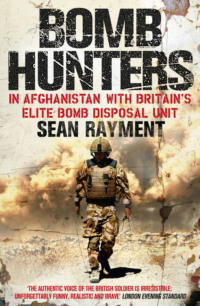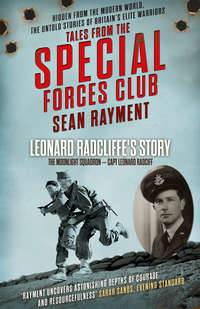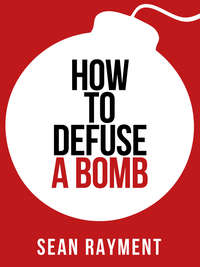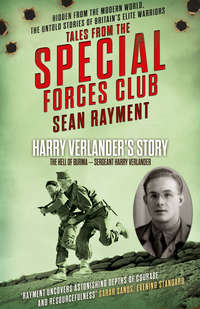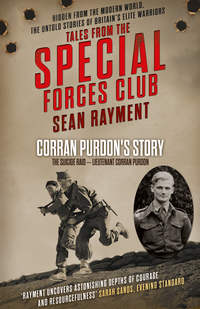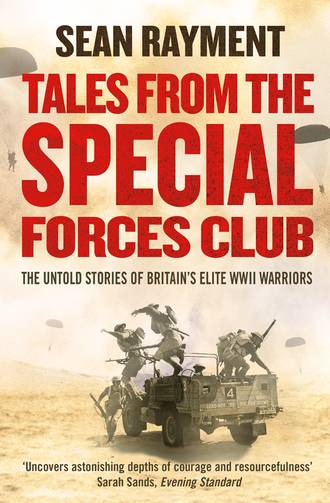
Полная версия
Tales from the Special Forces Club

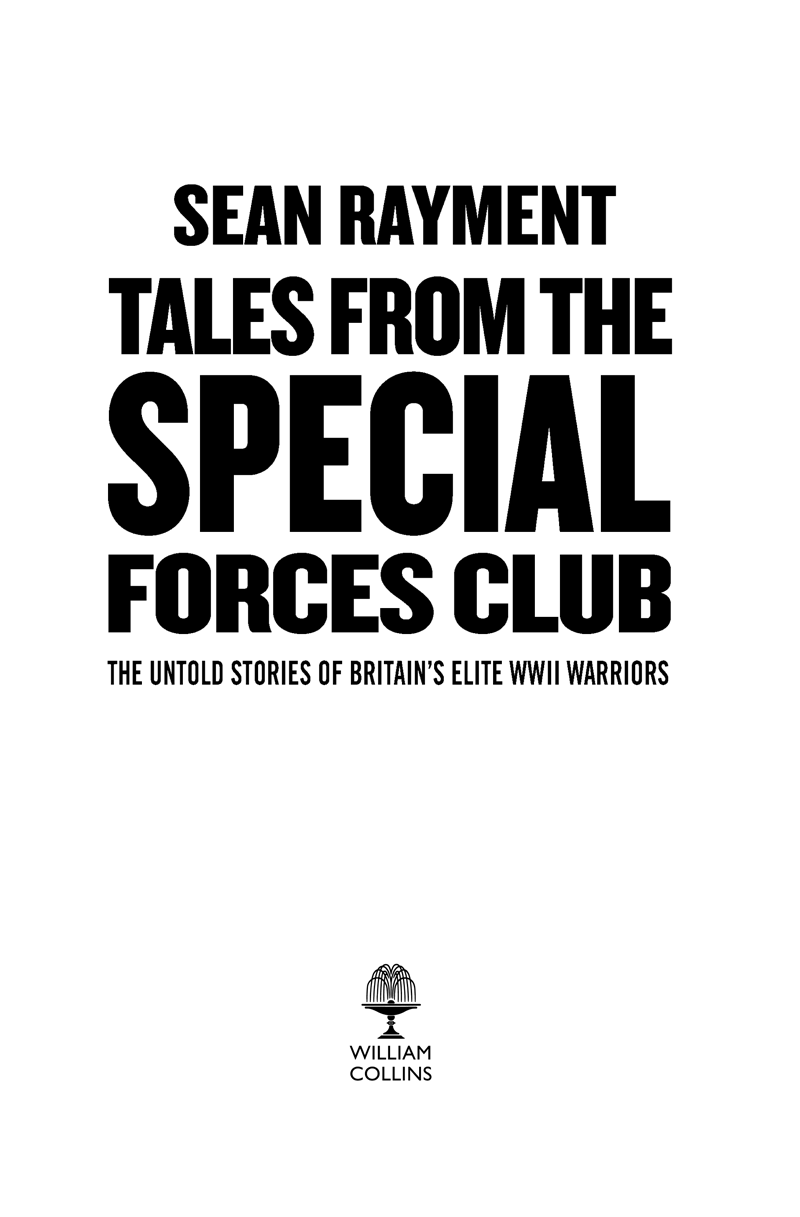
In memory of all the members of the special forces who sacrificed their lives during the Second World War
For Luca and Rafe
Contents
Cover
Title Page
In Memory
Dedication
Introduction
1 The Secret Life of Noreen Riols
2 The Two Wars of Jimmy Patch
3 The Greatest Raid of All
4 ‘The Best Navigator in the Western Desert’
5 Popski’s Private Army
6 The Moonlight Squadrons
7 Jungle Warfare behind Enemy Lines
8 The Jedburgh Teams
9 ‘We weren’t bloody playing cricket’
10 A Radio Operator at War
Acknowledgements
Picture Section
Copyright
About the Publisher
Introduction
When I joined the Parachute Regiment in 1986 as a young officer I entered a world where the exceptional was commonplace and every soldier, no matter what rank, was always expected to perform to the highest possible standard.
Back then, my battalion, 3 Para, was still basking in the success of the Falklands War and was rightly regarded as one of the best, certainly one of the toughest infantry battalions in the entire British Army. It was an elite organisation, full of men who, just four years earlier, had marched across the demanding terrain of East Falkland and fought the Battle of Mount Longdon with bullet and bayonet.
I was a fresh-faced, inexperienced, 24-year-old lieutenant expected to take command of 27 hardened paratroopers, half of whom had served in the Falklands, where they had taken life and seen life taken.
Life in 3 Para was an unforgiving and at times humourless existence, where only professional excellence mattered and those unfortunate souls who could not deliver the goods fell by the wayside – and many did.
As a young platoon commander I was cut a bit of slack, but not much. While it was accepted that I might make mistakes, I was also expected to learn from them – second chances were a rarity. But with the help and understanding of a good but tough sergeant and excellent soldiers I survived that initial apprenticeship. Anyone who wants to serve in the Parachute Regiment, irrespective of rank, class, colour or creed, must pass the gruelling pre-parachute selection course, and that creates a special bond of mutual respect between the officers and other ranks.
But while we in the Paras rightly regarded ourselves as an elite force, none of us would have referred to ourselves as ‘special forces’. That title was reserved for a very select few, those within the Army who were prepared to take another step and test themselves further.
In the late 1980s the special forces consisted of the Special Air Service, the Special Boat Service, the Force Research Unit, which ran agents in Northern Ireland, and the 14th Intelligence Company, a cover name for specially trained covert operatives who would spy on and monitor some of the most dangerous members of the IRA.
Those who undertook the various selection courses to join one of these special units were either successful and were rarely seen again or would return, having failed to make the grade for some reason or another, perhaps feeling sheepish, but admired by most for having the guts to give it a go.
Although I was obviously aware of the existence of the special forces, it wasn’t until I served in Northern Ireland that I met members of those units in the flesh. In 1989, 3 Para was posted to Palace Barracks in Belfast on a 24-month residential tour. After a brief period training recruits at the Parachute Regiment depot I was posted to Belfast, where I became the second-in-command of B Company, 3 Para. Some weeks later I was offered the job of Close Observation Platoon (COP) commander, a position which was widely regarded as the best job for any young officer in Northern Ireland. COPs were usually composed of soldiers from the reconnaissance platoons of infantry battalions and can perhaps be described as being at the lower end of the covert intelligence-gathering operation in Northern Ireland. The Belfast COP was effectively an autonomous unit which, although housed within Palace Barracks just outside Belfast, was under the control of the Belfast Tasking and Coordination Group, known as TCG, a part of the Royal Ulster Constabulary’s Special Branch. The Belfast TCG consisted of two experienced warrant officers from the SAS and 14 Int, together with a senior Special Branch detective.
That 12-month period also instilled within me a lifelong interest in the special forces and those men and women who have served in their ranks. But after five years’ Army service, during which time I had reached the rank of captain, I decided to resign my commission. Although I enjoyed the Army, I was never a ‘lifer’ and wanted to explore pastures new. In 1991 I embarked on a new career in journalism. By the mid-1990s I was reporting on the Balkans conflict, and I soon began to specialise in war reporting – a role which took me back to Northern Ireland and on to Iraq, Afghanistan, the Gulf, Africa, the Middle East and Guantanamo Bay in Cuba.
Western governments had hoped that the end of the Cold War would deliver an era of global stability, but instead a much more pernicious threat began to emerge with the rise of militant Islam across much of the Middle East, a phenomenon which would ultimately lead to the 9/11 attacks and the concept of ‘asymmetric warfare’.
Those units in the British Army best equipped to deal with this new threat were the special forces, namely the SAS, the SBS, the Special Reconnaissance Regiment and the Joint Communications Unit, the last two being formed from units which had previously existed as the 14th Intelligence Company and the Force Research Unit in Northern Ireland, as well as the covert civilian agencies such as MI5, MI6, Government Communications Headquarters (GCHQ) and the Metropolitan Police’s anti-terrorist squad.
For reasons of security, virtually all SF operations are classified, just as they were during the Second World War. But every so often a diamond emerges from the dust and allows one to understand why the special forces are so, well, special.
One such diamond, known as Operation Marlborough, came across my path in 2005, while I was reporting on the war in Iraq. Back in those dark days Baghdad was the most dangerous place on earth. Suicide bombers were routinely murdering hundreds of innocent civilians every week. The country was in anarchy and the West’s ‘war’ was being lost.
Operation Marlborough was a ‘take-down’ – a hit on an al-Qaeda suicide bombing operation involving teams of British SAS snipers embedded with ‘Task Force Black’ – the joint British/US special forces unit operating in Baghdad with the sole aim of defeating al-Qaeda.
The Task Force had received specific intelligence suggesting that al-Qaeda were about to launch a series of coordinated suicide bomb attacks across the city. Three bombers were being fitted with devices at an al-Qaeda bomb factory within the city and targets were already being reconnoitred – street markets and schools had been chosen by the bombers.
The intelligence was passed to the SAS, who immediately began planning the ambush. I understand that a 15-man SAS team covertly observed the target house for several days, watching everyone who entered and left. Listening devices were used to monitor the plans being hatched, while a Reaper Unmanned Air Vehicle tracked the suspected terrorists as they moved around the city.
After several days of covert surveillance, the order for the ‘take-down’ was given.
Early one morning, as the sun began to climb over the city, three SAS sniper teams watched and waited. When all three suspects emerged, the SAS opened fire. The three bombers, each wearing a suicide vest impregnated with ball bearings, were killed by a single head shot. A follow-up operation also led to the arrest of several key al-Qaeda bomb-makers.
It was a classic special forces operation which, estimates suggest, may have saved the lives of over 100 civilians.
* * *
The modern SAS soldier is a highly trained, intelligent, excellently equipped, well-paid fighter who would have notched up several years in the ranks before being allowed to undertake the special forces selection. At the outbreak of war 70 years ago, by contrast, the majority of those who served in the special forces had very limited combat experience. Those ‘originals’ had to learn their skills very quickly, and once in the field largely had to survive on their wits. I wanted to find out what motivated thousands of young men and women to risk all in the service of their country, when many could have probably served out the war in a safe, comfortable operations room, many miles from the front line.
My search began at the Special Forces Club in London in early 2011. I had attended various functions at the club over the last few years and one or two of my friends were members.
The club was created in the immediate aftermath of the Second World War in August 1945, just as the various ‘private armies’, or special forces, which had evolved during the previous five years of conflict were disbanded. Within a year the Long Range Desert Group, the Jedburgh Teams, the Special Operations Executive (SOE), the Chindits, Popski’s Private Army, the Commandos and the original Special Air Service all ceased to exist. The move was partly driven by ‘old school’ generals and the heads of the Secret Intelligence Service (SIS), who were never entirely comfortable with seemingly autonomous military or quasi-military organisations operating outside the established sphere of command.
Those who had served in these clandestine units were either posted back to their original units or, as in the majority of cases, returned to ‘Civvy Street’, seeking fresh challenges in a changed world. They were warned never to speak of covert operations, and some, especially those who had worked with foreign agents, were made to sign the Official Secrets Act. They were aware that to divulge any of their wartime activities could, in theory, result in imprisonment.
It was against this backdrop that the Special Forces Club was established in 1945 by Major-General Sir Colin Gubbins, KCMG, DSO, MC, the last chief of the Special Operations Executive. The general wanted to create a club where former members of the SOE could meet over lunch or dinner and chat about their wartime experiences, keeping alive the ‘spirit of resistance’, a phrase that became the club’s motto. He wanted to preserve and develop the bonds of comradeship and mutual trust which had been forged between a special group of men and women in the war years.
Together with a small group of former SOE agents, he leased from the Grosvenor Estate a large townhouse in Knightsbridge, central London. Then, as today, the building gave little away, for the club never liked to advertise its existence. Like its members, the club has always preferred anonymity, a desire to remain in the shadows, out of prying eyes. It is quite possible even today that many people living and working in the Knightsbridge area know nothing of the club’s existence. There has never been a name plaque to distinguish it from any other house in the same smart, leafy crescent.
The club was an immediate success and, unlike many other London clubs at the time, its doors were open to women, as many female soldiers and civilians had fought and died while serving in the SOE. Members were also welcomed from the wartime SAS, the Long Range Desert Group, the Jedburgh Teams and a host of organisations who had served behind enemy lines.
Only one covert unit was initially excluded from the club, the Secret Intelligence Service (MI6), which throughout the war years had been regarded as both a rival and an enemy of the SOE. I should add that the prohibition which prevented MI6 membership has since been lifted, and the club is used today by members of Britain’s modern secret establishment – MI5, MI6, the SAS, SBS, the Special Reconnaissance Regiment and the various covert police organisations which have been created to fight organised crime and Islamist terror groups – as a secure meeting place.
Over the decades since the end of the Second World War the club was one of the few places, if not the only place, where former members of the SOE – indeed agents from all the Allied countries – could meet and reminisce about their lives some 70 years ago when they fought a secret war against Nazi Germany in occupied Europe. Within the club’s secure walls, former saboteurs, assassins, radio operators and those who trained agents in the secret arts of espionage and guerrilla warfare could meet and recount tales of derring-do among friends, over a glass of whisky, knowing that their secrets would be safe.
It was during many of these meetings, sometimes at the bar, late in the evening, or over lunch sharing a good bottle of claret, that the stories of what the special forces did during the Second World War began to emerge. Often those stories were never fully documented, which means that no historical record exists, and with the passing of time many of them have been lost for ever. That is why it seemed to be a good idea to interview a selection of those ‘originals’ and collect their stories in a book. Thanks to the club, it was possible to get in touch with some of them.
The Special Forces Club is one of the most friendly and least fussy of all London clubs – I don’t think its members would have it any other way. It isn’t large or grand and consists of a library, a bar, some rooms for meetings and a few bedrooms where members can spend the night at a pretty reasonable rate. The walls of the staircase which leads up to the bar are adorned with portrait photographs of members of the SOE who perished on operations, while most of the rooms have original paintings depicting clandestine meetings of agents in Nazi-occupied Europe.
It was during one of the various events I was attending at the club that I first heard the name of Noreen Riols, who had helped in the training of agents during the war. I eventually made contact with Noreen, one of the few surviving members of the SOE, and some time later we agreed to meet at the club so that I could learn about her secret wartime activities.
And so began a fascinating journey, during which I learnt of the heroics of men like Jimmy Patch, who was called up in 1940 before being sent to fight in the desert as a gunner in the Royal Artillery. To escape the drudgery and routine of the regular Army, he volunteered for special duties and was eventually accepted into the fabled Long Range Desert Group, taking part in some of the most celebrated covert operations of the North African campaign. Later, during an ill-fated operation in the Greek Islands, Jimmy was captured by the Germans but escaped to fight on in Yugoslavia.
Also serving in the North African campaign was Mike Sadler, who left England in the late1930s with the intention of becoming a farmer in what was then Rhodesia but ended up becoming the ‘best navigator’ in the SAS. Mike served with soldiers whose names are now part of the historical fabric of the special forces, such as Lieutenant-Colonel Paddy Mayne and Lieutenant-Colonel David Stirling, the founder of the SAS. Mike took part in many of the early SAS missions, in which the elite fighting force built its reputation attacking German airfields deep behind enemy lines in North Africa. ‘My resounding memory is that it was such tremendous fun,’ Mike explains in the book.
The adventures of Captain John Campbell, who was erroneously branded a coward at El Alamein but later went on to win the Military Cross and bar, while in Italy serving with Popski’s Private Army, make another remarkable story. He was later described by Popski, a charismatic British officer of East European heritage, as the ‘most daring of us all’. John is the only surviving officer who served with that elite force.
Among the most dangerous ventures of the war were the night missions to occupied France flown by the RAF’s Moonlight Squadrons, of which Leonard Ratcliff is a rare survivor; Corran Purdon recalls his part in the daring St Nazaire Raid, which led to imprisonment and the MC; and Bill Towill, a pacifist until Dunkirk, describes the horrors of jungle warfare behind enemy lines with the legendary Chindits.
Men who served in the Jedburgh Teams, a secret SOE unit, recall their experiences in France and the Far East. All were young volunteers who wanted to see some real action before the war ended. The soldiers were trained in covert communication, silent killing and sabotage, before being parachuted into occupied France just before D-Day to assist in organising the Resistance movement. Some of those who survived volunteered to serve in Burma, including men like John Sharp, who won the Military Medal, Fred Bailey, who fought alongside both the Maquis and Burmese guerrillas, and Harry Verlander, who escaped death by a hair’s breadth when he was attacked by a Japanese officer wielding a samurai sword.
Tales from the Special Forces Club presents their unique stories of courage, conviction and fighting spirit. I hope you enjoy reading it as much as I have enjoyed writing it.
CHAPTER 1
The Secret Life of Noreen Riols
Training SOE Agents
‘The disruption of enemy rail communications, the harassing of German road moves and the continual and increasing strain placed on German security services throughout occupied Europe by the organised forces of Resistance, played a very considerable part in our complete and final victory.’
General Eisenhower, May 1945
It was on a Monday morning in August 2011, when a black London taxi cab dropped me at the corner of a leafy crescent in Knightsbridge, that I made my first visit to the Special Forces Club as a guest of one of its original members.
The club is as anonymous today as it was when it opened after the Second World War, its address only known to a select few. I press a small bell fixed to the building’s outer wall adjacent to a heavy, tan-coloured oak door, and a few seconds later the door clicks open.
‘Yes, sir, can I help you?’ a young receptionist enquires helpfully.
‘My name is Sean Rayment and I’m here to see Noreen Riols,’ I respond. A few elderly club members milling around in the lobby immediately turn and look at me, with a mixture of suspicion and interest.
‘She is waiting for you through there,’ responds the receptionist, pointing at a half-open door through which the morning sun is starting to shine. As I walk past another office two middle-aged men look up from behind their computer and stare unsmiling as I pass. I feel as though I have just been frisked.
Looking into the room, I see that Noreen Riols is reclining in a slightly worn, red velvet armchair which has the effect of diminishing her delicate frame. She is sipping a cup of breakfast tea while reading a copy of The Times and appears perfectly at home in the cosy, peach-coloured drawing room.
‘Noreen?’ I ask hesitantly as I enter the room.
‘Yes?’ she replies, looking slightly confused before a smile fills her face. ‘You must be Sean. I’m sorry, I was expecting someone older. Please, come in and sit down. Now, would you like a cup of tea?’
After months of research, searching and seemingly endless emails and telephone calls, I have come face to face with Noreen Riols, one of the very few members of the SOE still alive.
As a journalist and former officer in the Parachute Regiment, I have met members of covert intelligence agencies, such as MI5, MI6, the SAS and more obscure organisations such as 14 Intelligence Company, which operated exclusively in Northern Ireland from the 1980s and whose existence was never officially acknowledged by the British government, on numerous occasions. I have always been struck by the physical ordinariness of those who inhabit the covert world. They might be super-fit and have brilliant analytical minds, but from the outside they tend not to stand out from the crowd; they are mostly neither too tall nor too short, fat or thin, handsome or ugly – just ordinary. For those who live their lives in the covert world of espionage and counter-espionage, blending in, being almost invisible within the crowd can be a life-saving quality. And Noreen is no exception. Sipping tea in the Special Forces Club she looked like everyone’s favourite granny, with a kind, smiling, gentle face. It was curious, therefore, to think that some 70 years earlier Noreen was one of a select band of SOE personnel who were training agents to conduct assassinations and sabotage across Europe as Britain and its allies fought for their very existence.
Noreen and I shake hands before she adds: ‘There aren’t very many of us left, you know.’ By that she means members of the SOE, the wartime clandestine force created in July 1940 on the orders of Winston Churchill, the Prime Minister, and Hugh Dalton, the Minister for Economic Warfare, with the aim of conducting sabotage, espionage, assassinations and forming resistance movements against the Axis powers in occupied countries.
Noreen was one of the many women employed by the secret organisation during the war. Today, aged 86, she is one of the few surviving members of F Section – the department which dispatched more than 400 agents, including 39 female spies, into France between 1941 and 1945. The methods of infiltration included parachuting, landing by aircraft and using fishing boats and submarines.
The section was one of SOE’s most successful and was responsible for creating dozens of underground networks across France. Many of the agents were Britons who were fluent in French and were recruited from a wide range of backgrounds and occupations. Some were already serving in the armed forces, while others were recruited because of their knowledge of France, all united by their loathing of the Nazi ideology and the desire to strike back at a regime which had already enslaved millions of civilians.
But it was a dangerous and demanding occupation, and newly trained agents were warned that they had a 50 per cent chance of surviving the war. Those who were captured faced torture at the hands of the Gestapo followed by almost certain execution.
SOE’s primary role was to help organise the French Resistance into a fighting force capable of mounting sabotage, with the primary targets being the rail and telephone networks.
‘Isn’t it funny that now that there are so few of us left we are in more demand than ever?’ Noreen adds before returning to her seat. ‘Now tell me, what do you want to know? There are no secrets any more.’
* * *
Noreen Riols was born into a naval family on the Mediterranean island of Malta. From an early age she had decided that she too wanted to lead an adventurous life which would begin with taking a degree at Oxford. War broke out before she was ready to go to university, but she was already becoming a capable linguist at the Lycée, the French school in South Kensington.





